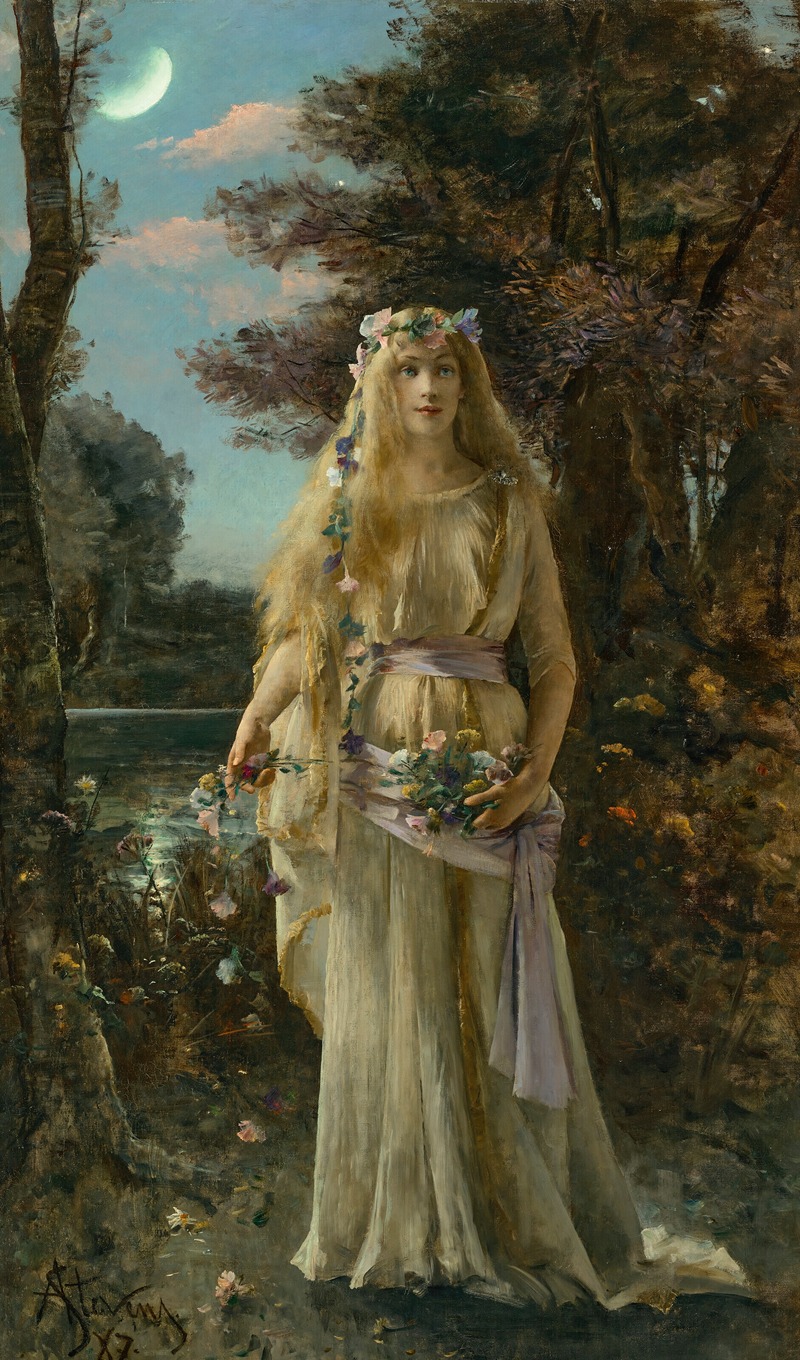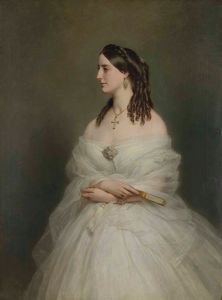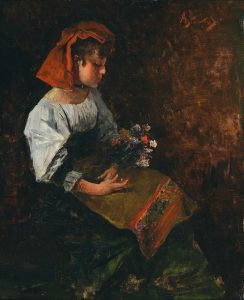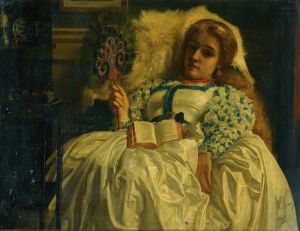
Ophélie
A hand-painted replica of Alfred Stevens’s masterpiece Ophélie, meticulously crafted by professional artists to capture the true essence of the original. Each piece is created with museum-quality canvas and rare mineral pigments, carefully painted by experienced artists with delicate brushstrokes and rich, layered colors to perfectly recreate the texture of the original artwork. Unlike machine-printed reproductions, this hand-painted version brings the painting to life, infused with the artist’s emotions and skill in every stroke. Whether for personal collection or home decoration, it instantly elevates the artistic atmosphere of any space.
Ophélie is a painting by the Belgian artist Alfred Stevens, created in 1880. Alfred Stevens was a prominent 19th-century painter known for his detailed and elegant depictions of women, often capturing the nuances of contemporary fashion and society. Born in Brussels in 1823, Stevens studied at the Académie Royale des Beaux-Arts in Brussels and later in Paris, where he became associated with the French art scene.
The painting Ophélie is inspired by the character Ophelia from William Shakespeare's play "Hamlet." In the play, Ophelia is a tragic figure who descends into madness and ultimately drowns. Stevens' interpretation of Ophelia reflects the Victorian fascination with Shakespearean themes and the romanticized portrayal of tragic heroines.
In Ophélie, Stevens presents a melancholic and serene image of the character. The painting captures Ophelia in a moment of quiet reflection, possibly before her tragic demise. She is depicted with delicate features and a somber expression, embodying the fragility and beauty often associated with the character. The use of light and shadow in the painting enhances the ethereal quality of the scene, creating a sense of timelessness and introspection.
Stevens' attention to detail is evident in the intricate rendering of Ophelia's attire and the surrounding environment. The artist's skillful use of color and texture brings a lifelike quality to the painting, making it a compelling representation of the Shakespearean character. The background of the painting is typically subdued, focusing the viewer's attention on Ophelia herself and her emotional state.
Ophélie is a testament to Stevens' ability to blend literary inspiration with his artistic vision, creating a work that resonates with viewers on both an emotional and aesthetic level. The painting is part of Stevens' broader oeuvre, which often explores themes of femininity, beauty, and the complexities of human emotion.
Alfred Stevens' work, including Ophélie, has been exhibited in various galleries and museums, reflecting his significant contribution to 19th-century art. His paintings are appreciated for their technical excellence and their ability to capture the essence of his subjects. Stevens' legacy continues to be celebrated in the art world, and his works remain influential in the study of 19th-century European painting.
In summary, Ophélie by Alfred Stevens is a poignant and beautifully executed painting that draws on the tragic character of Ophelia from Shakespeare's "Hamlet." Through his meticulous technique and emotional depth, Stevens creates a lasting impression of the character, highlighting his mastery as an artist and his ability to convey complex themes through his work.


















